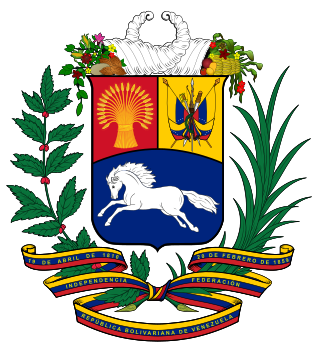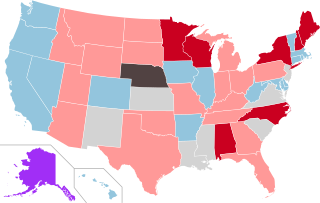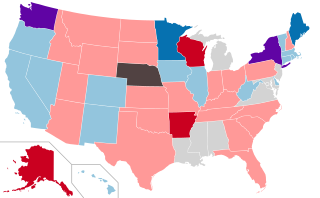Application in business
A staggered board of directors or classified board is a prominent practice in US corporate law governing the board of directors of a company, corporation, or other organization, in which only a fraction (often one third) of the members of the board of directors is elected each time instead of en masse (where all directors have one-year terms). Each group of directors falls within a specified "class"—e.g., Class I, Class II, etc.—hence the use of the term "classified" board. [2] The work of the Shareholder Rights Project has had a significant effect on the number of classified boards on the S&P 500. [3] : 159
In publicly held companies, staggered boards have the effect of making hostile takeover attempts more difficult; however, they are also associated with lower firm value. [4] : 10 When a board is staggered, hostile bidders must win more than one proxy fight at successive shareholder meetings in order to exercise control of the target firm. Particularly in combination with a poison pill, a staggered board that cannot be dismantled or evaded is one of the most potent takeover defenses available to U.S. companies. [5]
In corporate cumulative voting systems, staggering has two basic effects: it makes it more difficult for a minority group to get directors elected, as the fewer directorships up for election requires a larger percent of the equity to win; and it makes takeover attempts less likely to succeed as it is harder to vote in a majority of new directors. [6] Staggering may also however serve a more beneficial purpose, that is provide "institutional memory" — continuity in the board of directors — which may be significant for corporations with long-range projects and plans. [6]
Institutional shareholders are increasingly calling for an end to staggered boards of directors—also called "declassifying" the boards. The Wall Street Journal reported in January 2007 that 2006 marked a key switch in the trend toward declassification or annual votes on all directors: more than half (55%) of the S&P 500 companies have declassified boards, compared with 47% in 2005. [7]
A shareholder rights plan, colloquially known as a "poison pill", is a type of defensive tactic used by a corporation's board of directors against a takeover.
A member of parliament (MP) is the representative in parliament of the people who live in their electoral district. Members of parliament typically form parliamentary groups, sometimes called caucuses, with members of the same political party. Many countries with bicameral parliaments, this term refers only to members of the lower house since upper house members often have a different title. The terms congressman and deputy are equivalent terms used in other jurisdictions.
Bicameralism is a type of legislature that is divided into two separate assemblies, chambers, or houses, known as a bicameral legislature. Bicameralism is distinguished from unicameralism, in which all members deliberate and vote as a single group. As of 2022, roughly 40% of the world's national legislatures are bicameral, while unicameralism represents 60% nationally and much more at the subnational level.

The speaker of a deliberative assembly, especially a legislative body, is its presiding officer, or the chair. The title was first used in 1377 in England.

The National Assembly is the federal legislature of the Bolivarian Republic of Venezuela, which was first elected in 2000 under the 1999 constitution. It is a unicameral body made up of a variable number of members, who are elected by a "universal, direct, personal, and secret" vote partly by direct election in state-based voting districts, and partly on a state-based party-list proportional representation system.
An upper house is one of two chambers of a bicameral legislature, the other chamber being the lower house. The house formally designated as the upper house is usually smaller and often has more restricted power than the lower house. A legislature composed of only one house is described as unicameral.

The North Dakota Legislative Assembly is the state legislature of the U.S. state of North Dakota. The Legislative Assembly consists of two chambers, the lower North Dakota House of Representatives, with 94 representatives, and the upper North Dakota Senate, with 47 senators. The state is divided into 47 constituent districts, with two representatives and one senator elected from each district. Due to the Legislative Assembly being a biennial legislature, with the House and Senate sitting for only 80 days in odd-numbered years, a Legislative Council oversees legislative affairs in the interim periods, doing longer-term studies of issues, and drafting legislation for consideration of both houses during the next session.

The Congress of the Dominican Republic is the bicameral legislature of the government of the Dominican Republic, consisting of two houses, the Senate and the Chamber of Deputies. Both senators and deputies are chosen through direct election. There are no term limits for either chamber.

The National Congress is the legislative body of Brazil's federal government. Unlike the state legislative assemblies and municipal chambers, the Congress is bicameral, composed of the Federal Senate and the Chamber of Deputies. The Congress meets annually in Brasília from 2 February to 22 December, with a mid-term break taking place between 17 July and 1 August.

Elections in Mexico are held for officials at federal, state, and municipal levels. At the federal level, the nation's head of state, the president, is directly elected with the popular vote by all Mexican citizens for a six-year non-renewable term. All members of the bicameral federal legislature, the Congress of the Union, are also elected by all Mexican citizens. At the state level, each state has an elective governor and unicameral congress. At the municipal level, the municipal presidents are also elected by their citizens. Since 2016, a constitutional amendment has designed Mexico City to be a fully autonomous entity on par with the states. Its city mayor, city congress, and borough mayors are elected by their citizens in a similar fashion to those states.

Midterm elections in the United States are the general elections that are held near the midpoint of a president's four-year term of office, on Election Day on the Tuesday after the first Monday in November. Federal offices that are up for election during the midterms include all 435 seats in the United States House of Representatives, and 33 or 34 of the 100 seats in the United States Senate.
A member of the Legislative Assembly (MLA) is a representative elected to sit in a legislative assembly. The term most commonly refers to members of the legislature of a federated state or an autonomous region, but is also used for several national legislatures.

The Federal Government of Mexico is the national government of the United Mexican States, the central government established by its constitution to share sovereignty over the republic with the governments of the 31 individual Mexican states, and to represent such governments before international bodies such as the United Nations.

The 2010 United States state legislative elections were held on November 2, 2010, halfway through President Barack Obama's first term in office. Elections were held for 88 legislative chambers, with all states but Louisiana, Mississippi, New Jersey, and Virginia holding elections in at least one house. Kansas and New Mexico held elections for their lower, but not upper houses. Four territorial chambers in three territories and the District of Columbia were up as well.

The 2018 Nebraska State Legislature elections took place as part of the biennial United States elections. Nebraska voters elected state senators in the 24 even-numbered seats of the 49 legislative districts in the Nebraska Unicameral. Nebraska is unique among American| states in that there is only one chamber in its state legislature, and this chamber is called the Unicameral and the State Legislature interchangeably. State senators serve four-year terms in the Nebraska Unicameral.

The 2018 United States state legislative elections were held on November 6, 2018, for 87 state legislative chambers in 46 states. Across the fifty states, approximately 56 percent of all upper house seats and 92 percent of all lower house seats were up for election. Additionally, six territorial chambers in four territories and the District of Columbia were up as well.

The 2022 United States state legislative elections were held on November 8, 2022, for 88 state legislative chambers in 46 states. Across the fifty states, approximately 56 percent of all upper house seats and 92 percent of all lower house seats were up for election. Additionally, six territorial chambers were up in four territories and the District of Columbia. These midterm elections coincided with other state and local elections, including gubernatorial elections in multiple states.

The 2016 United States state legislative elections were held on November 8, 2016, for 86 state legislative chambers in 44 states. Across the fifty states, approximately 65 percent of all upper house seats and 85 percent of all lower house seats were up for election. Nine legislative chambers in the five permanently-inhabited U.S. territories and the federal district of Washington, D.C. also held elections. The elections took place concurrently with several other federal, state, and local elections, including the presidential election, U.S. Senate elections, U.S. House elections, and gubernatorial elections.

The 2012 United States state legislative elections were held on November 6, 2012, for 86 state legislative chambers in 44 states. Across the fifty states, approximately 65 percent of all upper house seats and 85 percent of all lower house seats were up for election. Nine legislative chambers in the five permanently-inhabited U.S. territories and the federal district of Washington, D.C. also held elections. The elections took place concurrently with several other federal, state, and local elections, including the presidential election, U.S. Senate elections, U.S. House elections, and gubernatorial elections.

Elections to state legislatures were held on November 2, 2004, alongside other elections. Elections were held for 85 legislative chambers, with all states but Louisiana, Mississippi, New Jersey, Alabama, Maryland, and Virginia holding elections in at least one house. Michigan and Minnesota held elections for their lower, but not upper houses. Six chambers in three territories and the District of Columbia were up as well.















